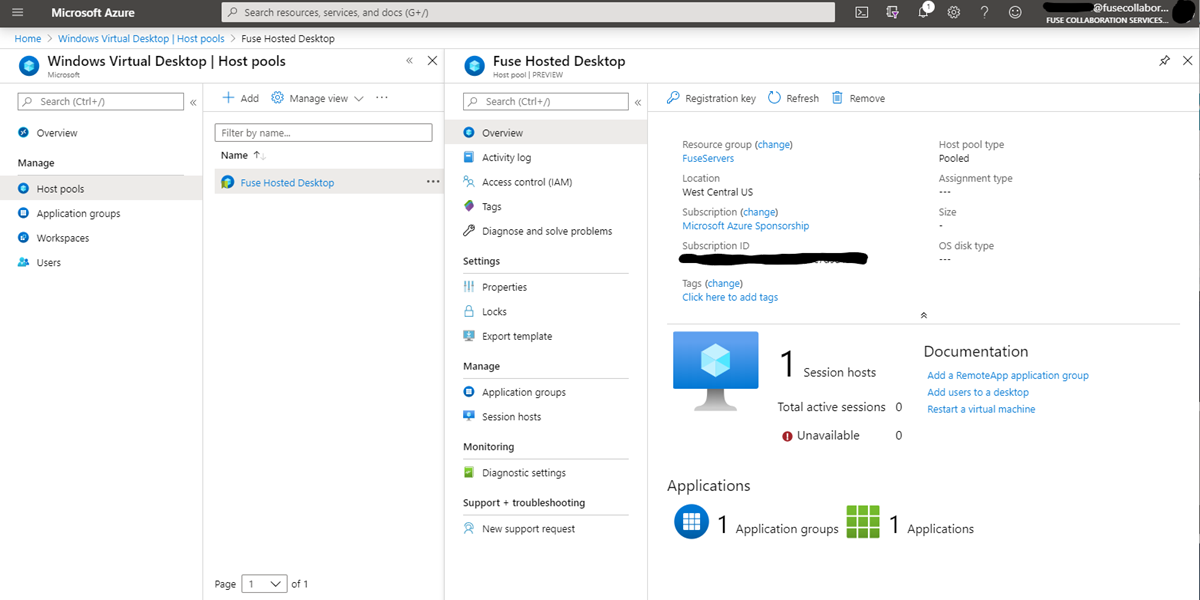Microsoft Windows Virtual Desktop – Cost Effective & Quick To Set Up

Microsoft Window Virtual Desktop is a virtualised Windows operating system, based on the Microsoft Azure cloud computing service. Desktop virtualisation separates the desktop environment and software from the physical device(s) on which it runs. Where traditionally office workers would have worked on desktop computers running the operating system and applications locally, increasingly workers are using these resources remotely.
What a virtual desktop means for users
From the users' point of view, a virtual desktop means that they can access a consistent environment from a variety of different locations and devices, including mobile and tablet hardware. There is no need to synchronise data across different operating systems since each physical interface reproduces the same virtual desktop.
From a systems point of view, this architecture is valuable as it centralises the operating system and application software, rendering it more consistent and secure. Furthermore, redundancy and backup solutions are built into the system and more easily maintained.
Advantages and disadvantages of virtual desktops
There are, of course, virtual desktop infrastructure advantages and disadvantages. For the former, Microsoft virtual desktop is quick to set up and use. However, by way of disadvantages, costs can be challenging to calculate, since there are numerous different licensing configurations available.
Businesses with Microsoft 365 can access Microsoft Virtual Desktops running Windows 7 or Windows 10 at no additional cost. For users wanting to migrate an existing Windows Server RDS environment to Azure, a Microsoft Remote Desktop Services Client Access License will be needed. These are not, however, the only services that clients will require to use Windows Virtual Desktop.
What is Microsoft Azure?
To manage the virtualisation environment, a Microsoft Azure account is required. Azure is Microsoft's core cloud computing service and provides the backbone to their software as a service (SaaS), platform as a service (PaaS) and infrastructure as a service (IaaS) offerings. Azure is needed for operating system storage, data disk, user profile storage, and networking on virtual machines. There are numerous sizing options, as detailed on the Windows Virtual Desktop pricing page. Additional Azure services may also be needed to run applications, databases, and to access files.
What are the costs?
Microsoft Azure pay as you go licensing is based on the number of virtual machines (VM) and charged per VM, per hour. You can choose to shutdown in evenings and weekends, during which you won’t be charged for running. These costs come down considerably for customers purchasing one-year or three-year Reserved Virtual Machine (RVM) Instances. Helpfully, these RVM instances have some flexibility and can be exchanged or returned if necessary.
Costs are also affected by purchasing Azure Hybrid Benefit rights, a software assurance scheme for Windows Server licenses. For clients who already have this scheme, the option is very attractive from a cost perspective, but new clients may not want to add the complication of managing yet more licensing schemes. Microsoft's pricing calculator may help resolve the various price points and options.
Professional assistance from Fuse
With these complications, the help of a trusted IT support provider is invaluable. Fuse is a Microsoft Gold Partner whose expertise and professionalism can aid businesses in negotiating your virtualisation project. We can set up and manage all aspects of the VM environment, giving your consistent and reasonable up-front costs with no management headaches. Call 01604 797979 today to find out more.










